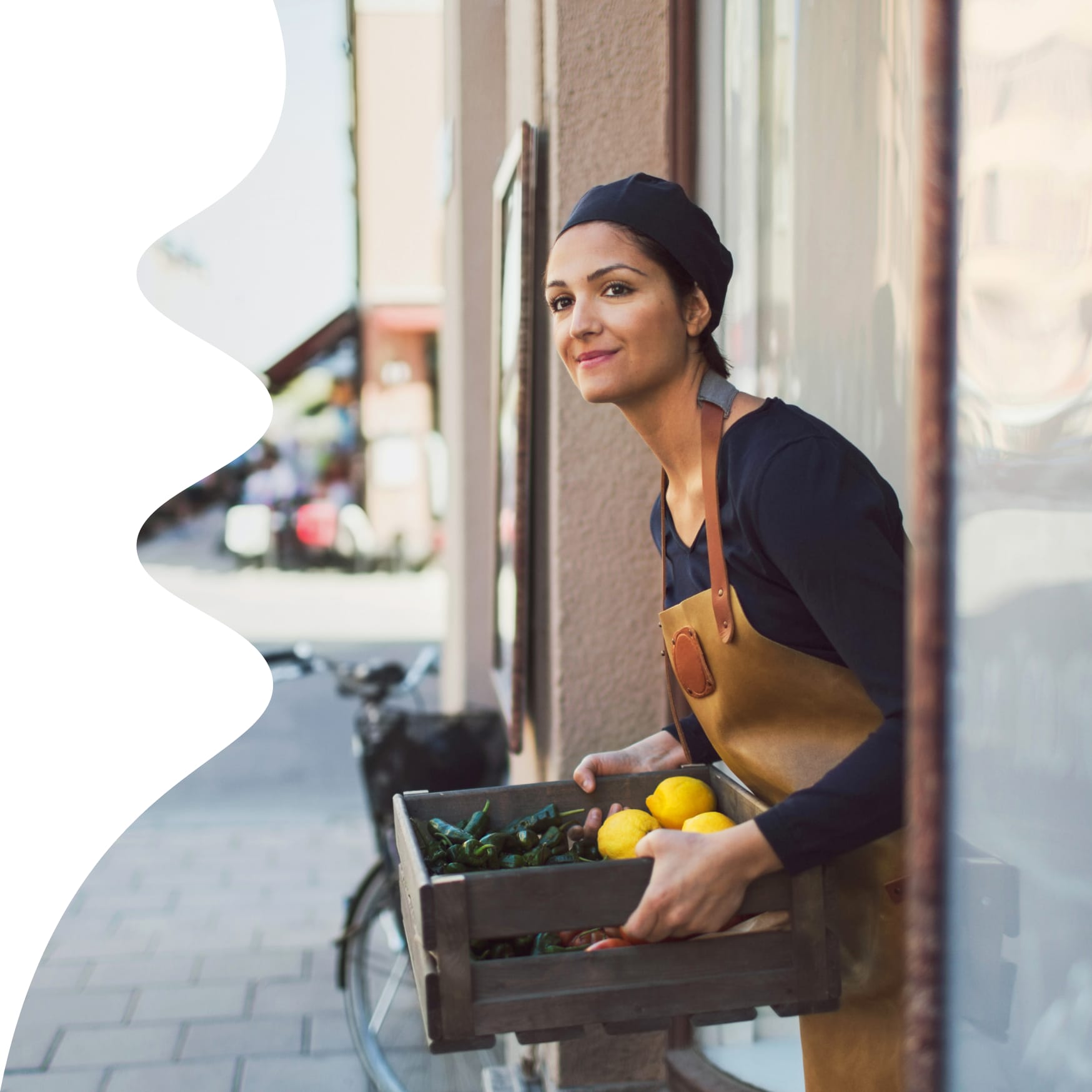Adyen Retail Report ~ Chapter two
Through thick and thin Understanding consumer loyalty

There’s nothing like a global crisis for reassessing your priorities. Initially, it was all about bare essentials, which explains the stock-piling of toilet roll and long-life milk (although not so much the hair dye). What followed for many was a period of boredom, isolation, and anxiety. Throw in some financial concerns and the shadow of a global recession and we’ve got an understandably cautious consumer.
As consumer confidence falters, each purchase takes on a greater significance. But our research finds that, if you win a customer’s loyalty, they’ll stick by you.
“We felt that empathy was important when talking to customers. Selling our products was no longer the priority, we had to get through this together. Take care of your customers and they’ll take care of you back.”
CJ Weerasinghe ~ Head of Finance, MUJI
Consumer survey
63% ~ I’ll shop more with local retailers as I want them to stay open
63% ~ I’m more likely to choose a retailer with payment- linked loyalty
73% ~ I’ll keep supporting retailers I relied on during the pandemic
62% ~ A retailer’s ethics is more important now
Strongly agree / Agree
Neither Agree nor disagree / Don’t know
Disagree / Strongly disagree
Inspiring loyalty
Proximity and habit
We know (and psychologists have confirmed it) that the more uncertain the world around us, the more we cling to the familiar. We also know that, in many countries, lockdown measures heavily restricted people’s movements. So it’s not surprising that, during the peak of the crisis, consumers stayed local, preferring to buy from businesses they already knew. After all, when the world feels strange and scary, it’s reassuring to see familiar faces when you pop out to buy a loaf of bread. This is particularly true for older demographics and the highest proportion of consumers preferring to stay closer to home were aged 55 and over.
Another important factor for consumers is your ability to serve them during a crisis. Most global consumers indicated that they would continue to favor the businesses they relied on during the pandemic. So, if you were there for your customers when the chips were down, you’ll be rewarded with a devoted following. This trend also extends to ecommerce with almost half of global consumers remaining loyal to local businesses even when buying online.
“We have a very close relationship with our customers. They know the in-store consultants by name and vice versa. So our challenge was: How do we bring that genuine and beautiful in-store experience to our digital channels? We’ve launched new customer service initiatives such as live chats and video consultations, curbside pick-up, and click and collect. In this way, we can be sure our customers have uninterrupted access to both our products and expertise.”
Robbie Tutt ~ GM Digital and Technology, Aesop
% that will continue shopping with and supporting retailers they relied on during the pandemic.
% that will shop more with retailers located near them because they want them to stay open.
Global
73%
67%
APAC
74%
70%
Brazil
76%
71%
Europe
73%
66%
US
69%
63%
A social conscience
Generation Z is the torch-bearer for social consciousness, with Greta Thunberg leading the way. But it seems that social awareness in consumerism has filtered through to older generations as well. According to our research, over half of all consumers stated they would go out of their way to buy from brands that have demonstrated a social conscience. And an even greater number stated that a retailer's ethics (such as paying staff fairly, contributing to the community, or caring about the environment) is more important to them than before the pandemic. The global crisis appears to have awakened a social conscience in us all.
say they will go out of their way to shop with responsible businesses that demonstrated a social conscience/engaged with charitable initiatives during the pandemic
Regional spotlight: Loyalty
Countries that like to stay close
Compared to a global average of 41%, 51% of Italians, 57% of Polish, and 53% of Spanish prefer to shop locally. And 59% of Polish say they feel more loyal to brands that have shops near to them (vs 43% globally).
Brazilians are also loyal to local businesses. 34% said they have shopped online with a retailer who was traditionally in-store only (21% above the global 13%). And 53% feel more loyal to brands that have shops near them (compared to 43% globally).
The most socially aware
Of all the consumers surveyed, the Italians and Spanish displayed the biggest social consciences. 71% of Italians and 72% of Spanish will go out of their way to shop with responsible businesses that demonstrated a social conscience or engaged with charitable initiatives during the pandemic (compared to 59% globally).
“Retailers must engage with society and with the issues that people care about. You don’t have to advertise it, but you must play your part.”
CJ Weerasinghe ~ Head of Finance, MUJI
Loyalty powered by payment technology
The beauty of unified commerce is that your channels are connected in one system making it possible to run cross-channel loyalty programs. For example, a customer’s payment method can become their loyalty card, which can automatically trigger discounts, tailored recommendations, and other rewards. It means you don’t need to rely on your sales staff to recognize regular customers and you can roll out the red carpet online as well. So even when you can’t meet face-to-face, your customers still feel special.
Curious to learn more about payment-linked loyalty?
“We’re looking at the ways people transact, particularly in this ‘new normal’ to make sure we’re providing the right options. This includes mobile point of sale, which allows customers to pay outside the store. We also support and pay-by-link, where a customer pays for items via a secure payment link which can be sent as a follow-up to a video consultation. We’re doing all we can to ensure customers feel comfortable.”
Robbie Tutt ~ GM Digital and Technology, Aesop
No touching
Contactless payments have never looked so good. Consumers want the pleasure of making a purchase without worrying about their safety. And they expect businesses to meet the hygiene standards mandated by their governments. Contactless payments are now the method of choice for over half of all consumers surveyed. And most want to see retailers make use of technology to reduce person-to-person contact.
The same goes for F&B. Respondents are concerned about coming into close contact with other diners and believe businesses should offer contactless payment options wherever possible.
% that are concerned about the hygiene of payment terminals and would prefer contactless payment methods
Global
54%
APAC
58%
Brazil
78%
Europe
51%
US
46%
want retailers to use in-store technology to reduce person contact
worry about person-to-person contact in restaurants now
say restaurants should do everything they can to introduce contact-free ways to pay
Regional spotlight: Hygiene-conscious
Of all respondents, the Swedish and British are amongst the biggest advocates for social distancing with 58% of Swedish and 57% of British concerned about being in close proximity to strangers (compared to 47% globally).
This concern also applies to eating out. 65% of Swedish said that proximity was their main concern when visiting bars and restaurants (compared to 39% globally). In Brazil, 94% of consumers have avoided dining out, with 68% citing their concern about being close to strangers. And in Singapore, 47% say they’ll be dining out less following the pandemic (vs 29% globally) with 62% stating they didn’t feel it was safe to be in close proximity in restaurants.
Another important factor for many is the cleanliness of payment terminals. Already, 54% of global consumers are concerned about the hygiene of payment terminals and would prefer contactless payment options. This climbs to 64% in Spain and 72% in Singapore.
Contactless payments today
Contactless payments have come a long way from simply tapping your card on a terminal. Near field communication (NFC) technology also supports digital wallets such as Apple Pay and Google Pay™️ in Europe and the US, and Alipay and WeChat Pay in Asia. These wallets have the added benefit that they help to blur the lines between digital and physical transactions so a customer can move seamlessly between the two. And, thanks to their secure authentication methods (like passcodes, fingerprints, and facial recognition) they’re not restricted to standard contactless transaction limits. Crucially, they remove the need to go digging around in your wallet, which reduces friction and helps increase conversions.
QR code payments are common practice in Asia, but they’re still relatively new in other parts of the world. In-store, they’re triggered by scanning a QR code that is generated by the payment terminal. The customer is then directed to an online payment page and the payment becomes an ecommerce transaction, although the transaction is still linked to the physical location. And, since QR code-initiated payments come with ecommerce risk checks, they’re also free from contactless transaction limits.
For restaurants, there’s a whole new swathe of payment options that allow diners to keep their distance. These include pay-at-table and pay-at-bar, in which bar staff can send the drinks order straight to their handheld POS device, freeing up the cash desk for other orders.





